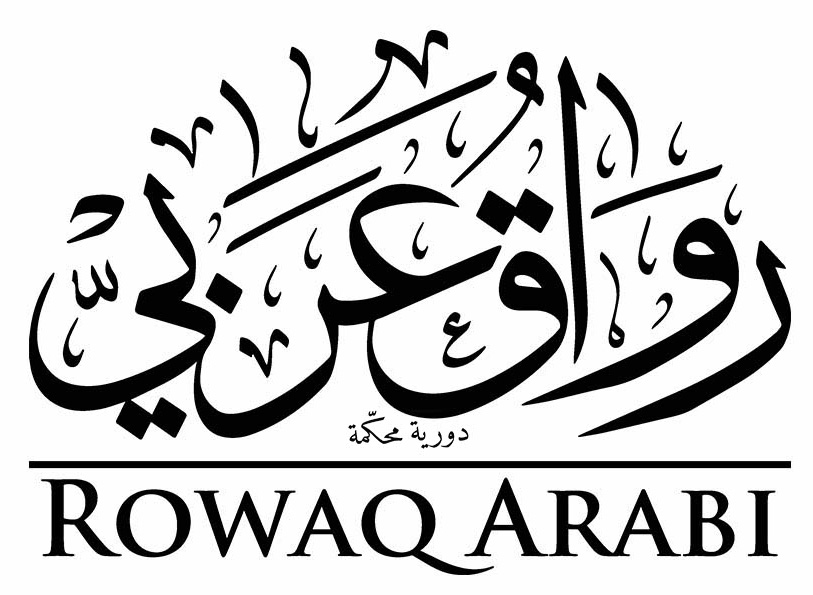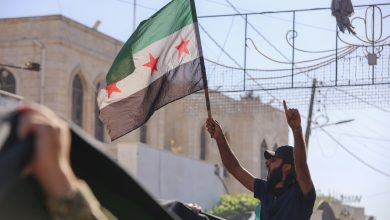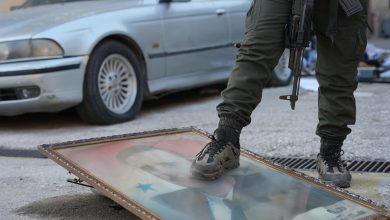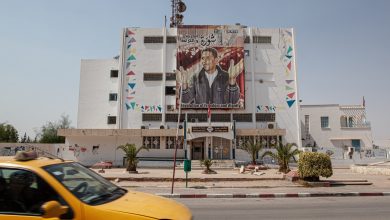Views: The West’s Enduring Stability Paradigm for the Arab Region
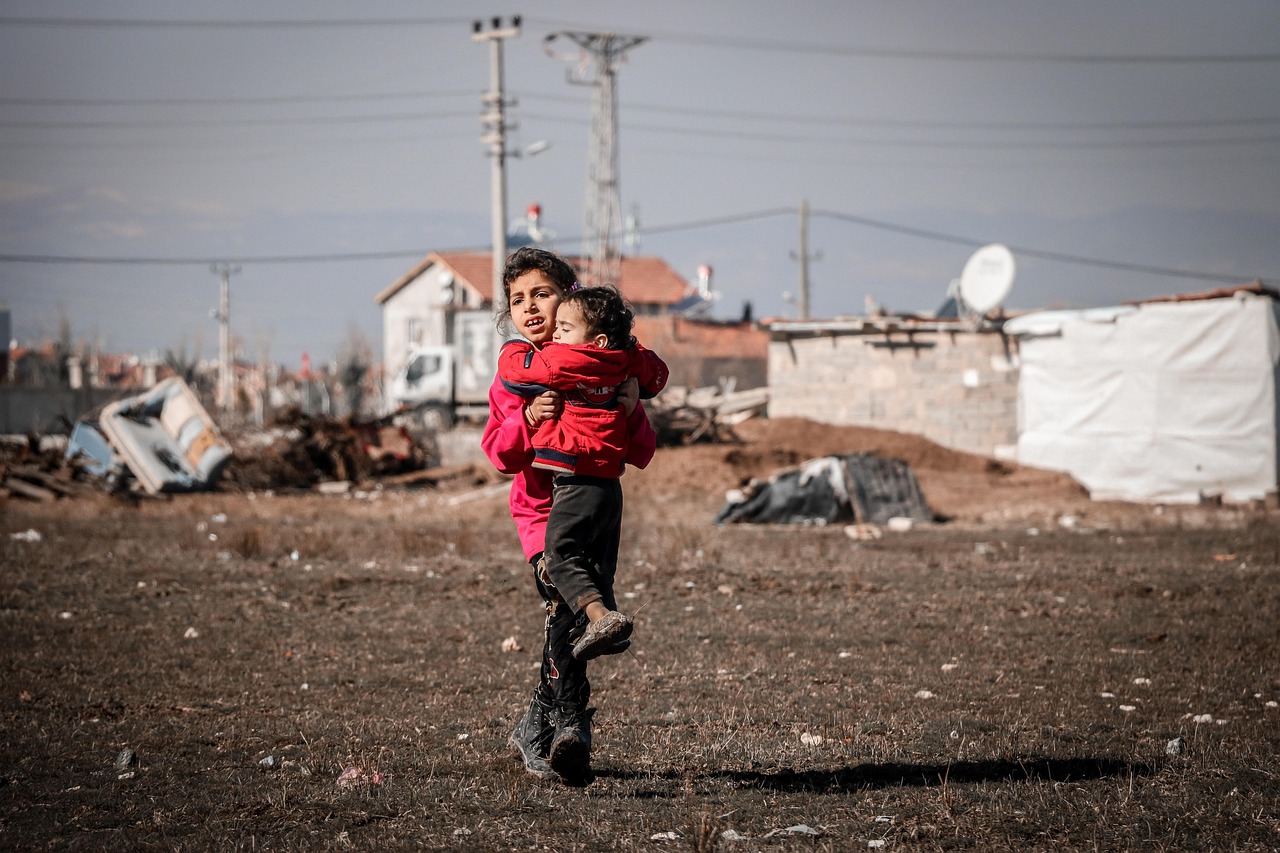
Citation: Natasha Hall and Joost Hiltermann. 2025. “Views: The West’s Enduring Stability Paradigm for the Arab Region.” Rowaq Arabi 30 (3): 14-21, https://doi.org/10.53833/JZYZ5485.
Predicting the stability of authoritarian regimes is challenging. By their very nature, autocratic rulers stifle the free flow of information and ideas. What the 2011 Arab popular uprisings showed is that the regimes themselves may not be resilient, but authoritarianism is. The question is why?
The protests that swept through the Arab region in 2011 broke several Arab autocracies that previously appeared indestructible. Along with the illusion of regime resilience, they called into question the so-called stability paradigm – the notion that Western geostrategic interests are best served by bolstering authoritarian rulers.[1] That decades-old policy was based on the ‘the devil you know’ maxim: it saw these dictators, some of them indescribably brutal toward their own subjects, as the only barrier standing between stability and intolerable chaos. Yet, when their control collapsed over their inability to serve the interests of their populations, it became clear that they were anything but invincible.
The durability of authoritarianism proved greater than some of the regimes themselves, however. Egypt and Tunisia effectively rejoined the authoritarian club following a dalliance with participatory politics after the popular uprisings, as the United States (US) and Europe capitulated to new-era autocrats they saw as able and willing to preserve their core interests. And oil-producing states in the Gulf and elsewhere marshalled resources to bolster their coercive apparatus in the face of the popular threat, using external support that Western countries were keen to deliver in order to keep the oil flowing. These states also extended patronage to allies not endowed with natural wealth, like Jordan and Morocco, to ensure they would not buckle and set off a domino effect.
Not all followed this trajectory: civil war reduced Syria, Yemen, Sudan, and Libya to ruins. Desperate to pivot away from the Arab region, the US left local partners like Saudi Arabia and the United Arab Emirates (UAE) to deal with the mess and pursue their own objectives, even when their interventions left the region even more unstable. That chronic instability also served the agenda of the US’s strategic ally, Israel, which has had an abiding interest in keeping current and potential enemies divided and weak until normalisation deals with malleable authoritarian regimes become possible. The result today is a chaotic patchwork of collapsed, fragile, and authoritarian states.
A Record of Regime Durability
Before 2011, Arab states appeared to have a remarkable longevity. They oversaw an extensive police apparatus that penetrated deeply into the sinews of their societies, gathering intelligence, instilling fear and forestalling openly expressed dissent. Regimes also benefited from a tacit social contract with their subjects – the ‘authoritarian bargain’ – that promised state-delivered stability and services in exchange for political quiescence.[2] Oil-rich states – long reinforced by the West – have been at a particular advantage in this social contract, whereas poorer states, unable to meet the political and economic aspirations of their people, had to rely on outside support for their survival.
The scholarly literature from that time highlights the factors driving regime resilience. Eva Bellin perhaps summed it up best. She attributed the ‘robustness’ of regimes’ coercive apparatus to a combination of factors that had to be present: sufficient revenue streams to sustain it; significant international support; security forces’ low level of institutionalisation; and weak popular mobilisation.[3] If any of these factors was absent, or had altered, the regime stood at greater risk.
In the Arab region, these factors held by and large. The Gulf monarchies’ most potent security forces were praetorian guards established to protect the regime, which commanded their absolute loyalty, not a professional merit-based military that inspired public trust. And oil-producing states experienced minimal popular mobilisation because they were capable of suppressing and even preventing incipient dissent. Resource wealth also allowed for co-optation of potential opposition through public-sector employment and various selective subsidies.
In the rest of the region, the picture was more complicated. The state was increasingly unable to provide jobs and basic services, and leaned more heavily on a coercive apparatus to keep dissent at bay. Many marginalised and impoverished populations looked beyond the state for support – often from grassroots religious organisations doling out charity. In this space, organisations like the Muslim Brotherhood and, much later, Hezbollah emerged, posing formidable challenges to the traditional political establishment in the countries in which they operated – Egypt and Lebanon, respectively – and inspired fear in regimes throughout the region.
Outside Egypt, the Brotherhood is a Muslim-worldwide network more than it is an organisation, manifesting itself through local expressions, not branches, each with its own leadership and national agenda, though generally all tend to be referred to as the Ikhwan (Brothers). In the years preceding the Arab uprisings, Egypt’s Muslim Brotherhood was the region’s most potent social movement, well-organised and disciplined, with genuine mass support. It stepped in where the state was absent, providing basic services to people in desperate need of them. The regime of President Hosni Mubarak allowed it to operate as a charitable movement as long as it steered clear of politics. In Jordan, the Hashemite monarchy allowed the Brotherhood’s local expression, the Islamic Action Front, to operate politically, and even participate in parliamentary elections, but it always made sure to limit the power it could gain by rigging the electoral system and co-opting its members. In Yemen (Al-Islah) and Tunisia (An-Nahda), the Ikhwan were suppressed prior to 2011 but were able to spread their influence covertly through preaching and public service provision in areas where the state was lacking.
In every case, any attempt by the Ikhwan toward mobilisation or real political participation was quickly squelched, and with it, any chance for democratisation.[4] Accountable institutions, political participation, and elections were considered capricious liabilities. The US preferred to avoid such uncertainty, as did Israel and some of the Gulf states, which additionally found it difficult to accept the possibility of Islamist or any opposition parties rising to power.
An Enduring Stability Paradigm
Fear of the Ikhwan reinforced the stability paradigm for Arab regimes’ external supporters. Arguably, however, the US, Europe, and the Arab regimes were afraid of the uncertainties that truly participatory politics could bring more than of the Ikhwan as such, but saw in the Ikhwan the most likely vector of democratisation in the event of regime collapse. In the 1950s and 1960s, there were similar apprehensions about Arab nationalism and various strains of socialism (also fuelled by Cold War rivalries). In each case, the US and its partners feared a participatory politics that they could not control. Thus, while big on democracy promotion in the Arab region, the US largely ignored its own rhetoric in this regard. Its expenditures dedicated to bolstering regimes’ security forces vastly exceeded what it spent on activities that could have nudged autocratic systems toward genuine participatory politics, a rule-of-law-based judiciary, and the professionalisation of civil society organisations. The US has continued to send around a USD 1.3 billion in military aid annually to Egypt.[5] While an additional few million used to be devoted to supporting civil society, the US hardly even pays lip service to such operations anymore.
Daniel Baissa and Melani Cammett highlight the importance of assistance in keeping certain leaders afloat in seventeen Middle Eastern countries from 1962 to the eve of the 2011 uprisings. Using non-parametric machine learning techniques to remove researcher bias, they found that ‘foreign aid, particularly concessional lending, is crucial for authoritarian resilience, particularly above a certain threshold, and that repression, the Cold War, and external grants have secondary predictive power.’[6]
These findings advance our argument that foreign aid and development finance can, and often are, intended to help leaders survive. Take the case of Jordan. The country is perpetually in a financial crisis, as it has no way of taxing people to meaningfully reform basic services. Yet to head off popular protest, it can rely on the US to bail it out. This is because Washington will not turn its back on Arab monarchies or other regimes that have signed peace treaties or otherwise normalised relations with Israel. Such a status carries its own risks, however. Egyptian President Anwar Sadat paid for it with his life. As such, Arab leaders expect to receive significant support in return.
Over time, the US and Europe were joined in their security-and-stability-first approach by Israel and the UAE, which each for their own reasons supported efforts to curb the Ikhwan’s power and eventually tamp down the aspirations unleashed during the popular revolts.[7] Israel, too, preferred dealing with regimes over the messy unpredictably of states engaged in open politics and regular elections – even including the Syria of Hafez and later Bashar al-Assad. Indeed, it was revealed after the fall of Bashar al-Assad’s regime in December 2024 that Israeli intelligence had communicated with high-ranking Assad officials for years via WhatsApp, negotiating covert deals and managing regional security issues.[8]
Authoritarian states were effectively learning from each other and cooperating in an effort to survive. Counter-revolutionary fervour overtook the waves of protests in a process of authoritarian diffusion. Steven Heydemann and Reinoud Leenders point out that leaders in the Arab region watched events unfold after the eruption of the popular revolts, and ‘became increasingly persuaded that their best bet lay in strategies of repression, and, in essence, in hunkering down and pursuing a range of measures to ride out uprisings.’[9]
A Fickle and Feckless United States
Facing an Arab region in turmoil, the Obama administration at first seemed prepared to jettison the stability paradigm that had long defined its approach to the region. Its initial professions of support for democratic change in the region soon dissipated, however. It went along with the dramatic changes in Tunisia and Egypt, but otherwise stood back, and seemed to let regional partners do as they pleased, usually in support of authoritarian leaders. When a single authoritarian could not emerge to monopolise the use of violence, these regional powers precipitated proxy wars to prop up a chosen strongman. Saudi Arabia and the UAE sent Gulf Cooperation Council troops into Bahrain to stifle the popular uprising; helped foment a military coup against the popularly elected Brotherhood president of Egypt, Mohamed Morsi; and invaded Yemen in an effort to suppress, or at least contain, the Houthis (after initially helping to depose the dictator, Ali Abdullah Salih, in favour of an interim government). The UAE armed its chosen proxies in Libya and Sudan, and later led the way in normalising relations with Bashar al Assad in Syria.
The US also showed no appetite for supporting what should have been the next stage after regimes fell: to help build new political orders that enjoyed broad popular support based on a new social contract. It refrained from involving itself directly in Libya’s political struggles as France, Italy and others scrambled to organise post-Qadhafi governance, an effort that failed dismally.[10]
The Obama administration conspicuously kept out of the way as Saudi Arabia and the UAE helped the Egyptian military overthrow Morsi and reassert control in 2013. It even went so far as to avoid using the term ‘military coup’ for General Abdel Fattah el-Sisi’s power grab, because such an admission would have required it to cut its substantial annual military aid to Egypt under US law.[11] The only rebellion it backed was the popular effort to bring down the Assad regime in Syria, clearly not a friend of Washington. But even in this case its support of, first, the people in the streets and, then, the broad array of rebel groups was never more than lukewarm. Uncertainty about day-after scenarios proved too overwhelming, especially after the Libya experience, and in the end, Syria did not rank that high in US geostrategic interests. The administration was quite content to leave Assad in place as it was busy fighting jihadist groups with transnational agendas.
Moreover, burned by its experience in Iraq and bewildered by the rapid changes in the Arab region, the US began to eschew active involvement just at a time it was beginning to focus on the rise of China as its primary superpower rival. This shifting approach was fuelled by domestic pressures as well, as a populist ‘America First’ constituency gathered strength, culminating in the victory of Donald Trump in November 2016. In an effort to reduce its overseas footprint, the US continued to hew to the stability paradigm under President Trump, believing that strongmen could serve as a bulwark against ongoing conflict throughout much of the region. Yet the ‘elite bargains’ model of diplomacy, as experts at Chatham House explained, failed to address the drivers of conflict.[12] Democratisation and human rights were drifting further and further from even the rhetorical agenda.
President Trump accelerated this drift during his first term. He promptly displayed his authoritarian sympathies by embracing Egypt’s self-anointed leader, Abdel-Fattah el-Sisi, and cosying up to Gulf autocrats in search of profitable business deals. At the same time, the US approach toward the region became capricious, with Trump vowing support for Saudi Arabia against Iran, yet failing to lift a finger when Iran attacked Saudi oil installations in September 2019. (Yemen’s Houthis claimed responsibility for the attack.) In response, despite Trump’s openly displayed comfort with strongmen, many Arab leaders began to develop more brazen insurance policies. As some Gulf states sought détente with Iran to protect themselves against possible fallout from a direct US-Israeli confrontation with the Islamic Republic, they also worked to shore up their preferred dictator or warlord in other countries. The US did not and has not used political capital to stop them, preferring a laissez-faire approach to its allies and partners.
What Trump did do was to bring some of the US’s allies and partners together, culminating in the so-called Abraham Accords. Through the Trump administration’s mediation, the UAE and Bahrain signed ‘normalisation’ deals with Israel on the White House lawn in September 2020, later followed by Morocco and Sudan. These amounted to authoritarian pacts, involving not only enhanced trading relations but also the exchange of surveillance technology deployed to detect and suppress dissent. They also aimed to end the Israeli-Palestinian conflict by settling it in Israel’s favour and side-lining the Palestinians.
Though regimes across the Arab region were rupturing, the stability paradigm held firm in the Democratic administration that followed. When Joe Biden became president, he enthusiastically adopted the notion of Arab-Israeli normalisation. After presidential nominee Biden called Crown Prince Muhammad bin Salman a pariah for his part in the murder of Saudi journalist, US resident and former Saudi court insider Jamal Khashoggi, Biden as president re-embraced the de facto Saudi leader. At the same time, the administration increasingly distanced itself from conflicts in Syria, Libya, and Yemen, as well as from the Palestinian struggle for self-determination and the Sudanese popular revolution. The administration and its allies were so convinced of this approach that National Security Advisor Jake Sullivan infamously claimed at the end of September 2023 that the region was ‘quieter’ than it had been for two decades, as conflict and corruption continued to consume much of the region.[13] Just eight days after his public comments, Hamas attacked Israel, provoking a destructive Israeli reaction, including attacks on seven countries.
It could have been the nail in the coffin for the belief that conflict drivers can be overcome through elite deal-making, but it was not. The US charged forward, still guided by the stability paradigm. In the final months of the Biden administration, the US frantically tried to secure a Saudi-Israel normalisation agreement as Israel’s assault on Gaza raged on.
Facing an Uncertain Future
Despite the promise of the Arab uprisings, the region today is still composed of states unable to meet their peoples’ political and, in most cases, economic aspirations. The backlash from authoritarians and international actors against these movements for change has intensified. Leaders from President Recep Tayyip Erdoğan in Turkey to Kais Saeed in Tunisia used their control over the migration routes to Europe to stymy international condemnation over their increasingly authoritarian tactics, and make money in the process. Egypt’s Sisi survived, arguably becoming even more oppressive that his predecessor Mubarak with the help of the US and the Gulf.[14]
For their part, Gulf Arab states that normalised relations with Israel had a free hand in intervening in conflicts in Sudan, Libya, Yemen, and elsewhere. Even as the 7 October attack and the Arab revolts underlined the folly of this approach, the US has increasingly loaned out parts of its policy in the region to Israel – a country that seeks malleable authoritarian regimes or failed states that could not pose a real threat to its expansionist aims in the West Bank, Gaza, and beyond. As a result of this carte blanche, Israel has gone much further than the US appeared ready to do, meeting with no real resistance. It demolished much of Gaza and southern Lebanon; knocked out Iran’s forward defence strategy, many of its political and military leaders, and a good part of its nuclear capabilities; and hit Syria with more than eight hundred airstrikes that destroyed its military capability, occupied additional territory in the south, and attempted to deepen ethnic and sectarian divides.
Though the Trump administration initially aimed to end the war in Gaza and expressed support for the new Syria under Ahmed al-Sharaa’s leadership, it has allowed Israel to set a different course. It accepted Netanyahu’s arguments in favour of continuing the war in Gaza, with Trump himself even suggesting that the US would take over the small enclave to create a new ‘Riviera.’ And it turned a blind eye to Israel’s ongoing attacks in Syria, Iran, and Lebanon.
Leaders throughout the Arab region have read the room, and become emboldened to suppress real or perceived threats domestically and internationally. Sisi and Saeed have both cracked down on opposition figures while still receiving help from regional and international states. As for Al-Sharaa, it remains unclear whether he, in seeking to consolidate power, will encourage or discourage inclusive governance.
In this autocratic revival, the cooperation between authoritarian leaders and Israel has enhanced the ability of these states to prevent political change and to strengthen their hold on power. It has also allowed these states to intervene in fragile and conflict-affected countries at will, as each vies for its own strongman – from Syria to Sudan and Libya. This has made it far more challenging for civil society voices to be heard as they advocate for reconstruction and governance that would serve the majority of people, and to express dissent when the government fails to address societal, political, and economic needs and aspirations.
Surface Stability at Great Cost
In a chaotic multipolar world, international actors appear more than willing to forgo adherence to human rights and democratic standards for the immediate stability they see through strongmen. That said, the initial stresses that gave rise to the Arab uprisings remain or have gotten much worse. Water is increasingly scarce, unemployment and poverty are at unprecedented levels outside the oil-rich Gulf, and mistrust in government is high due to years of political and economic strife. Some of the most water-insecure places in the region like Syria, Yemen, and Iraq are expected to see their populations increase by eighty per cent by 2050.[15] Basic services like electricity remain abysmal even in energy-rich countries such as Iraq.
The time is overdue for political change but leaders within and outside the region have learned how to resist change as the best way to survive. Many are using surveillance technology and international support to squelch dissent before it gets to the streets. It is tempting to predict that in such an era, authoritarianism will prevail especially if the stability paradigm continues to be an abiding strategy of the US and regional powers. However, the past fifteen years have also exposed the inherent brittleness of such regimes. The popular uprisings in 2011 and 2019 showed that any new popular challenges to the delicate status quo could seriously undermine sitting regimes in a region that has had its fair share of unsettling changes in the past two years. Whether or not such scenarios come to pass in the next decade is anyone’s guess. But there can be no doubt that regimes’ failure to address popular grievances and conflict drivers will make autocratic rule a very precarious profession indeed.
AI Assistance Statement
No AI tools were used in the research and drafting of this essay.
[2] Eva Bellin, “Reconsidering the Robustness of Authoritarianism in the Middle East: Lessons from the Arab Spring,” Comparative Politics 44, no. 2 (January 2012): 138, accessed 6 August 2025, https://www.jstor.org/stable/23211807.
[3] Eva Bellin, “The Robustness of Authoritarianism in the Middle East: Exceptionalism in Comparative Perspective,” Comparative Politics 36, no. 2 (January 2004): 139-157, accessed 6 August 2025, https://www.jstor.org/stable/4150140.
[4] The Ikhwan are generally non-violent. Only in Palestine did they evolve an armed wing, Hamas, which has used violence in its bid to end Israel’s military occupation.
[5] Human Rights Watch, “Egypt: US Waives Human Rights Conditions on Military Aid,” 13 September 2024, accessed 4 September 2025, https://tinyurl.com/yc8aecvy.
[6] Daniel Baissa and Melani Cammett, “External Support and Persistent Authoritarianism in the Middle East,” SSRN, 22 January 2023, accessed 3 September 2025, http://dx.doi.org/10.2139/ssrn.4015909.
[7] The UAE is allergic to anything that smacks of Islamism, especially in its organised form, as the Ikhwan are, and has actively suppressed the local brand of the Ikhwan at home. Israel views support of the Ikhwan as boosting the fortunes of Hamas, even if it did so itself when the Ikhwan in the West Bank and especially Gaza were still nascent in the 1980s and Israel’s primary enemy was the Palestine Liberation Organisation (PLO) and its largest faction, Fatah.
[8] Guy Laron, “An Unexpected Gift: Israel and the Fall of the Assad Regime,” Wilson Center, 14 January 2025, accessed 3 September 2025, https://www.wilsoncenter.org/article/unexpected-gift-israel-and-fall-assad-regime.
[9] Steven Heydemann and Reinoud Leenders, “Authoritarian Learning and Authoritarian Resilience: Regime Responses to the ‘Arab Awakening,’” in Anna Agathangelou and Nevzat Sogul, eds., Arab Revolutions and World Transformations (London: Routledge, 2013), accessed 5 September 2025, https://shorturl.at/NBCrN.
[10] Jeffrey Goldberg, “Obama’s Former Middle East Adviser: We Should Have Bombed Assad,” The Atlantic, 20 April 2016, accessed 4 September 2025, https://www.theatlantic.com/international/archive/2016/04/philip-gordon-barack-obama-doctrine/479031/.
[11] Terry Gross, “Into the Hands of Soldiers’ Explores How the US Contributed to Chaos in Egypt,” NPR, 7 August 2018, accessed 3 September 2025, https://www.npr.org/2018/08/07/636254979/america-s-role-in-deposing-the-first-democratically-elected-president-of-egypt.
[12] Renad Mansour and Tim Eaton, “Rethinking Political Settlements in the Middle East and North Africa,” Chatham House, 20 September 2023, accessed 4 September 2025, https://www.chathamhouse.org/2023/09/rethinking-political-settlements-middle-east-and-north-africa/02-elite-bargains.
[13] Gal Beckerman, “The Middle East Region is Quieter Today Than It Has Been in Two Decades,” The Atlantic, 7 October 2023, accessed 3 September 2025, https://www.theatlantic.com/international/archive/2023/10/israel-war-middle-east-jake-sullivan/675580/. Note the date of publication: the day of Hamas’s attack, which upset whatever notional quiet had existed until then.
[14] US Embassy Cairo, “United States Announces $129 Million Investment in Egypt’s Development During US-Egypt Strategic Dialogue,” 19 September 2024, accessed 3 September 2025, https://eg.usembassy.gov/united-states-announces-129-million-investment-egypt-development/.
[15] Natasha Hall, “Surviving Scarcity: Water and the Future of the Middle East,” CSIS, 22 March 2024, accessed 1 October 2025, https://features.csis.org/surviving-scarcity-water-and-the-future-of-the-middle-east/.
Read this post in: العربية
